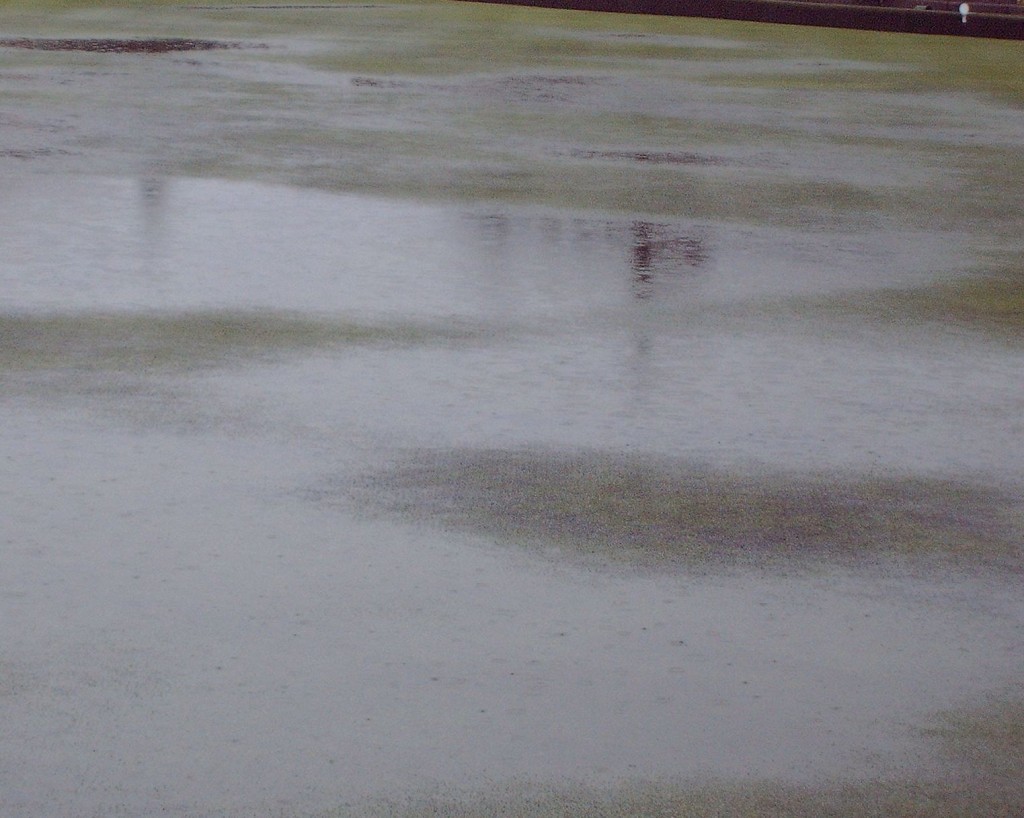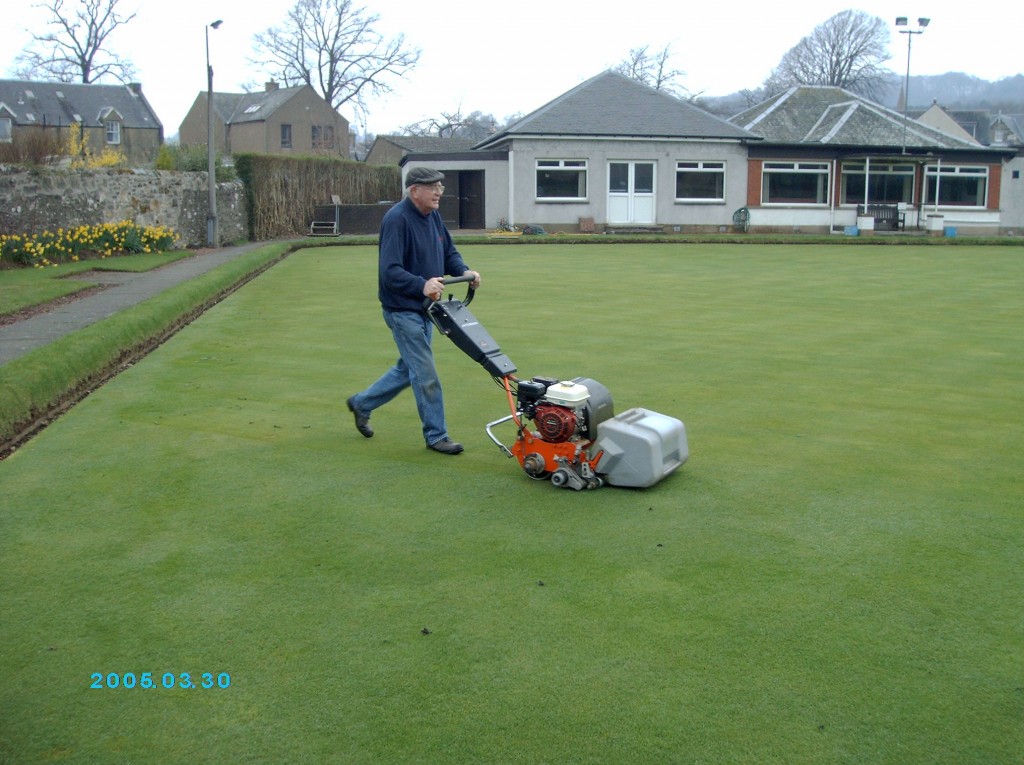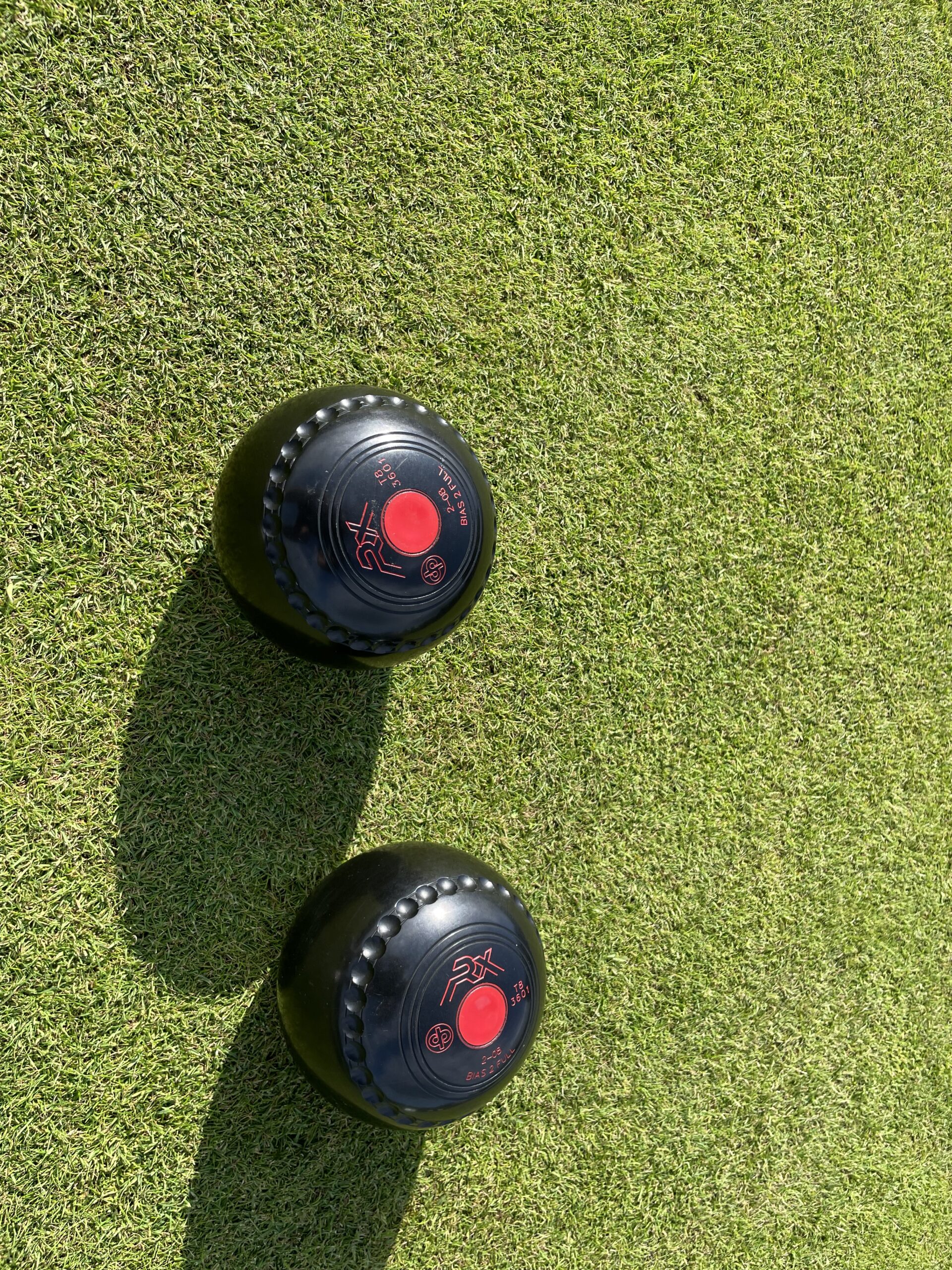Green speed is always a hot topic at this time of year and the most popular methods for achieving increased speed are usually to turn off the water and set the mower down; both of which can cause long term damage to the green.
Mowing the green regularly below 5mm can really start to harm it in terms of sward composition, drought resistance and general turf health. Rooting depth is directly proportionate to the amount of leaf that remains above, so at the very time that the turf needs deeper roots to seek out deeper lying moisture, we restrict its ability to put down roots by shaving the leaf off to within a millimetre of its life! Shaving the green too low can cause irreversible damage to the crown of the grass plants, which causes bare areas or at least areas of weakened turf, which will inevitably be taken over by meadow grass, weeds and/or moss.
The other big mistake that many clubs make is to turn off the water in an effort to induce greater green speed. Although droughting will rarely kill a green off completely, we are seeing some very high temperatures this summer and it is possible that greens will fail if not given enough irrigation. But that’s another story which you can read about here.
So, what can be done to increase green speed without causing damage to the green?
Well, to really get the speed up we need to be thinking about reducing the lateral growth on the green. There are a number of factors that can help to increase green speed and consistency for play and we’ve set them out in our guide which you can find by clicking here.
Today however, I want to concentrate on lateral growth and its affect on green speed. On many greens I visit I am told that the green is being cut at 4mm and that the members are still complaining about the green being heavy! On most occasions when confronted with this, it is possible to take the palm of your hand across the turf and tease some of the grass up to 10 or even 15mm in height!…now think about that for a minute; how “heavy” would the green be if cut at that height?
This phenomenon is due to a problem called lateral (or sideways) growth where the grass plants exhibit a recumbent growth habit and don’t stand up straight, meaning that they are not cut at the required height.
What’s the answer?
To overcome this problem we need to make allowance in our maintenance program for dealing with lateral growth. This can be achieved by several means, in order of importance these are:
- regular verti-cutting; I would suggest twice a month between April and September. Verti-cutting does exactly what it says, it cuts vertically through the turf surface to slice up lateral growth and tease up the turf prior to mowing, which is usually carried out straight after a verti-cut operation.
- use of groomers on the mower; again a very useful operation to be used sparingly. On many of my visits I see groomers being used as verti-cutters with the blades set well into the turf. You should never do this, as it can cause a lot of turf damage and even greater damage to the mower as it can put it under a lot of strain. Groomers are designed to be set slightly above the height of cut, to simply tease up the lateral growth or “nap” prior to cutting.
- brushing the green prior to cutting can improve the green speed also by teasing the grass up from its lateral growth habit prior to cutting.
There are many more tips on green speed in our green speed section here.



 Committees are difficult structures with which to run a business, but there can be no doubt in any bowling club official’s mind that the only way for clubs to survive and prosper in the future will be for them to be managed as proper businesses.
Committees are difficult structures with which to run a business, but there can be no doubt in any bowling club official’s mind that the only way for clubs to survive and prosper in the future will be for them to be managed as proper businesses.